27 D-Day Facts: Invasion, Combatants, Casualties, FAQ’s
D-Day was the beginning of the end for Nazi Germany. Find out more about this historic event.
If you’ve made it through a high school U.S. history class, you’ve probably heard of D-Day. The great invasion of Northern Europe by Allied troops is referred to most commonly as a single “day.” In actuality, it took years of logistical and technological planning to prepare the offensive assault for the Allies and the defense for the Axis.
We’ve broken down this article into two sections. Part One addresses ten frequently asked questions about the event, and Part Two showcased 17 facts about D-Day. A quick read through this article will help you understand the significance of this major event.
10 Frequently Asked Questions (FAQ’s) About D-Day
In the biggest war our world has ever experienced in WWII, D-Day was perhaps the most important day of that war. Students of history should know some of the basic facts.
1.) What is D-Day?
Codenamed “Operation Neptune”, D-Day was part of the Allied invasion of Normandy in Operation Overlord during WWII. It was the biggest cross-ocean invasion in history.
2.) What does the D in D-Day stand for?
The “D” in D-day simply refers to the word “Day.”
3.) What was the D-Day date?
June 6, 1944, was D-Day. One day before D-Day in military-speak is referred to as D-Day minus one. One day after D-Day (June 7, 1944) is referred to as D-day plus one. Operation Neptune ended on June 30, 1944 (D-Day plus 24).
On June 6, 2019, the 75th Anniversary of D-Day will be commemorated. The site, surrounding attractions and the Normandy area will be crowded with veterans, their families, and tourist to recognize this milestone.
4.) Who were the combatants?
The allies were made up of the Americans, British, and Canadian. About 6,000 ships with air support from 11,590 aircraft. 156,115 Allied Troops landed in Normandy.
The Germans defended the Normandy beaches.
5.) Who were the leaders on both sides?
General Dwight Eisenhower was the Supreme Allied Commander for all forces in Operation Overlord.
The Commander-in-Chief for Germany was Field Marshal Gerd von Rundstedt who was given much advice from Adolph Hitler. Responsible for the defense of Normandy was Field Marshal Erwin Rommel, who was well-known by his nickname, “The Desert Fox.”
6.) What were the names of the D-Day beaches?
The Allied codenames were Utah, Omaha, Gold, Juno, and Sword for the D-Day beaches in Normandy.
7.) How many casualties were there?
Some 425,000 German and Allied troops were either missing, wounded or killed during the Battle of Normandy. 37,000 Allied ground forces died. Over 16,000 Allied Air Forces members were killed.
8.) Where are the D-Day Memorials?
In the U.S., the D-day Memorial is in Bedford, Virginia. It is the national memorial for D-Day veterans.
In France, The Normandy American Cemetery and Memorial are located in Colleville-Sur-Mer. It was dedicated in 1956 and is home to 9,380 buried soldiers. A wall commemorates 1,557 soldiers missing in action.
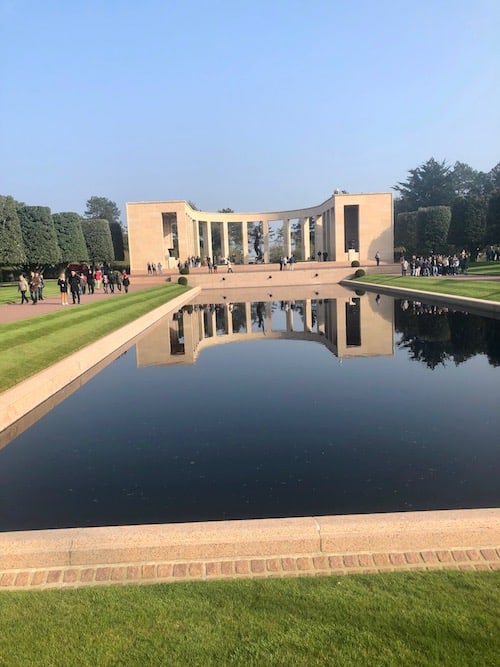
9.) Where are the museums?
In Normandy, check out the Caen Memorial Center. In Bayeux, the Memorial Museum of the Battle of Normandy is popular.
10.) Why was D-Day important?
It was a turning point in the war as it was the beginning of the end for Europe to be under the grips of Nazi Germany and the Axis powers.
17 D-Day Facts To Know
In recognition of the 75th Anniversary of the D-Day invasion, here are 17 things you should know about the historic event of D-Day.
1.) The D-Day Invasion
The Axis had been anticipating a mainland invasion from the Allies. The only questions were when and where would it come? In an effort to cover all of his bases, Hitler undertook one of the most ambitious construction projects of the 20th century: The Atlantic Wall. Construction started in 1942 and by 1944 the wall stretched over 1,600 miles. Thousands of slaves labored day and night for years to complete this feat.
The wall, although not entirely literal, demanded a substantial amount of German resources and consisted of everything from submarine and landing craft defenses to minefields, swaths of barbed wire, concrete cones, “hedgehogs”, beachside obstacles, machine gun embankments, bunkers, heavy artillery, support trenches, and a network of roadways and communication lines for German reinforcements to pour in from.
2.) Germany’s Defense of Normandy
Members of the Nazi Fifteenth Army joked that Normandy was a vacation beach. It was a place where troops could go to get some rest and relaxation. Field Marshal Erwin Rommel’s Fifteenth Army was his biggest strength and it was positioned at the Pas de Calais in tremendous cement fortifications.
These were bombed relentlessly by the Allied bombers. The Seventh Army, positioned at Normandy, was the envy of the Fifteenth as almost no bombs had fallen there to date.
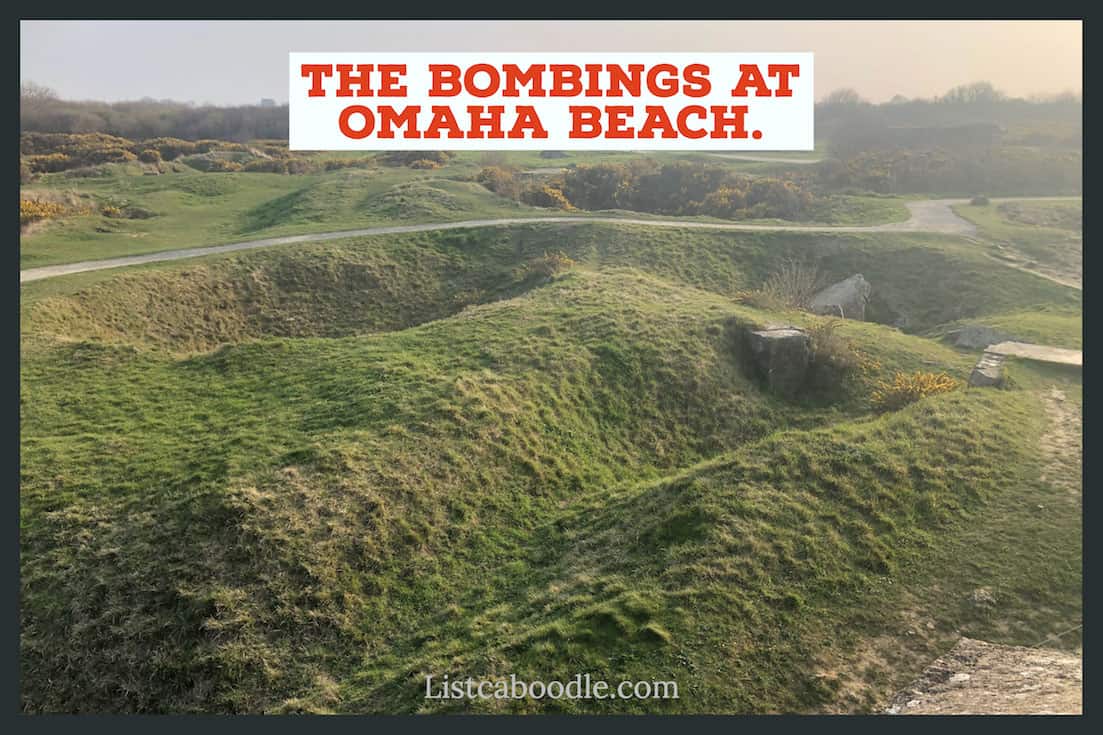
3.) The Pas de Calais Feint
The allies did all they could to intentionally mislead the Nazis into believing the Pas de Calais was the D-Day target. The logic was on their side: the Pas de Calais is the narrowest part of the English Channel and as a result of Hitler generally assumed this was the sensible place to defend most heavily. Diverting Resources from Normandy and other areas of the Atlantic Wall, both Hitler and Rommel disproportionately fortified the Pas de Calais which helped soften the actual target for the Allies.
The allies staged drills near the Pas de Calais, flew spy planes over the area, and even sent messages over communication lines that they knew were compromised and being spied on by the Germans indicating the Pas de Calais as the intended target.
4.) The Deception Plan
Inflatable and wooden tanks and planes were a vital part of the Allies’ diversion plan. In an effort to conceal their actual plans, the Allies constructed artificial divisions and intentionally placed them adjacent from the Pas de Calais and away from the true waterborne and airborne staging areas to serve as decoys. They went as far as even poorly camouflaging the decoys to make it appear that they were attempting to conceal them from Nazi spy planes.
5.) Allied Soldiers Kept in the Dark
The Allied troops had no idea when or where they were going. They were also forbidden to discuss any information regarding their drills or location with anyone else. Letters home were opened and screened before being mailed out to ensure maximum security. The success of D-Day was so critical that no element of security was too small.
6.) Rommel’s Untimely Vacation
Completely by coincidence Field Marshal Erwin Rommel went on vacation on June 4th after tireless months of guarding the coast – just 2 days before the invasion. Rommel was in charge of half a million men along 800 miles of western coastline in German-occupied France. Army Group B was the single greatest defense the Nazis had against the invasion and Rommel was the man in direct command of it.
Field Marshal Gerd Von Rundstedt had granted Rommel leave to go home and get some rest after being taken aback by Rommel’s tired and deteriorated appearance. In Rommel’s beliefs, the month of May had been ideal weather for the invasion and he got so little sleep during the month that he often forgot to eat meals as he was under constant strain, always anticipating the invasion.
When it didn’t happen, he assumed that the Allies wouldn’t strike at the beginning of June and that most likely they would wait to coincide the invasion with the Russian Summer Offensive. He incorrectly assumed that early June was the perfect time for a quick vacation.
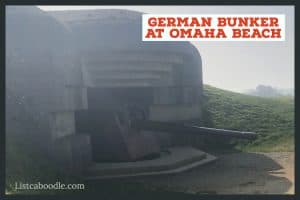
7.) Invasion Postponement
Eisenhower postponed the invasion by 24 hours because of bad weather, moving Operation Overlord from June 5th to June 6th at the last minute. However, due to the nature of the slow-moving assault (minesweeping ships, anti-aircraft balloons, and reduced communications), many ships were already in the English Channel making their way out toward France. It is reported that ships were as close as 38 miles from Normandy when they got the signal to turn around.
8.) Teletype Operator’s Dangerous Error
An AP teletype operator practicing her typing skills on an extra transmitting machine accidentally sent out a message indicating the Allies had successfully invaded Normandy on June 4th. The message was intercepted by the Germans – to both the Allies’ and Axis’ horror.
The message read: “URGENT PRESS ASSOCIATED NYK FLASH EISENHOWER’S HQ ANNOUNCED ALLIED LANDINGS IN FRANCE.”
The German’s, once verifying that they had not yet actually been invaded, placed the Fifteenth Army at Pas de Calais on high alert, but not the Seventh Army at Normandy. They wondered if the message was another deception tactic.
The Allies on the other hand already had the entire Operation Overlord machine in motion and were tasked with the difficult decision of deciding if they would postpone the assault or continue. They decided to continue.
9.) 6,000 Ships
The D-Day invasion force was comprised of over 6,000 ships. The vast majority were landing ships, but there was everything from spy submarines to combat ships and amphibious land vehicles. Everything had to sail down a narrow corridor behind a vanguard of minesweeping vessels and the ships communicated with flashing beacons.
10.) The Importance of the Mulberries
Of all of the sea vessels, arguably the two most important were two artificially constructed harbors called Mulberries. On these massive contraptions were crew quarters and anti-aircraft guns and bunkers. The Mulberries had their own outer and inner breakwaters transported with them.
The importance of these harbors cannot be understated. Once installed and fortified, they functioned as ports that would allow for a safe, effective, and swift way to begin mobilizing supplies and heavier ground vehicles directly into France. This allowed the Allies to largely bypass many of the defense fortifications of the Atlantic Wall. This great speed overwhelmed the German response.
11.) Few Dates Conducive to an Invasion
There were only three days in June that would be acceptable for the Allied invasion: June 5th, 6th, or 7th. These dates were determined via two factors – the need for a late-rising moon and low tide.
The late-rising moon was needed for the paratroopers’ drop planes to be able to fly over Normandy in the darkness. And, then have moonlight to operate on the ground once they had dropped in the hours before the morning invasion.
The low tide after dawn was needed for the seaborne landings in order to expose all of the boobytraps in the shallow waters and along the beach.
12.) 18,000 Paratroopers
When most people think about D-Day they envision troops storming the beaches. But, a vital portion of D-Day came in the earliest hours of June 6th. Eighteen thousand paratroopers from the U.S. 101st and 82nd divisions as well as the British 6th division descended down behind enemy lines hours before any support would arrive.
They were then tasked with destroying the deep-set German artillery that would otherwise rain down unopposed upon the ships and soldiers as they came ashore.
13.) The “Cricket Clicker” Communication Tool
The paratroopers landed scattered and alone in the dark in hostile territory without the aid of radio communications. But they did have an unusual device that was essential to surviving and regrouping: the D-Day “cricket clicker”. The device created an unassuming yet distinctive click when squeezed.
In the dark, if a paratrooper encountered another person, it was impossible to determine if the person was a friend or foe. The instructions for all paratroopers were to “call out” with one click, and “answer” with two clicks. If there was no response, the paratroopers were to assume it was an enemy soldier.
14.) Wooden Gliders: The Silent Carriers
Wooden gliders were dropped along with the paratroopers. The gliders carried vehicles, supplies, and soldiers. They were towed behind aircraft and then released once over Normandy. The pilots could use a simple rudder to steer the gliders and did their best to guide them down gently. Wooden gliders were used because they were silent and stealthy.
15.) Paratroopers’ Heavy Casualties
The paratroopers suffered heavy casualties: over 4,000 were killed, injured, or declared missing after the D-Day invasion. The number would have been much higher if not for the French Resistance. The local French was the only friendly forces waiting for the paratroopers when they landed.
They provided shelter, led them to safe passage and administered medical aid. They were able to warn to paratroopers about the dangers of the landscape and from the resident Nazi forces.
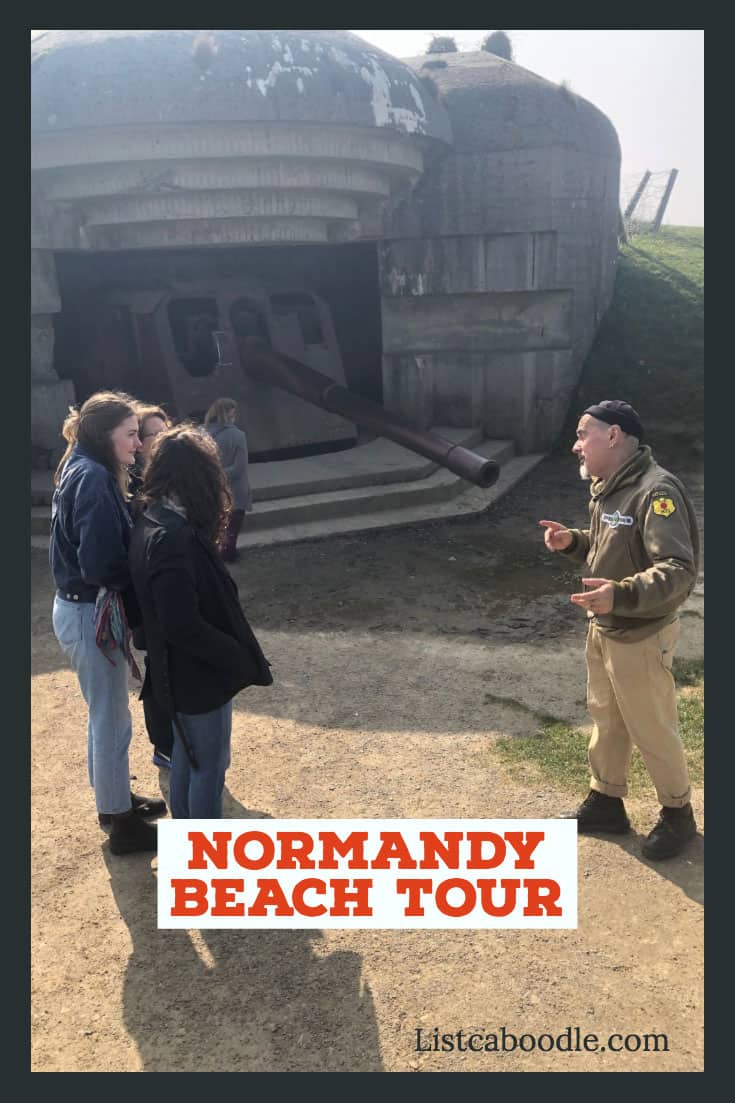
16.) The French Resistance
The French Resistance played an important role in the invasion. In the early stages, they helped sabotage anti-aircraft guns to make it easier for the paratroopers. Resistance members provided vital intelligence on where the German forces were stationed. They also estimated numbers of soldiers and where the artillery embankments were.
The French were also essential in sabotaging vital pieces of the Nazi defense. These included the power grid, communication lines, railways, and roadways. This sabotage activity provided subtle yet important pieces that made it more difficult for the Germans to respond.

17.) The Normandy Beaches
Utah and Omaha beach were the two most heavily fortified of the Nazi defenses. But, the Allied amphibious tanks were the unsung heroes in the assaults. They provided cover and substantial firepower to help the troops wade ashore and dash across the beach. Their effect on morale was as much a boon for the allies as it was a bane for the Germans.
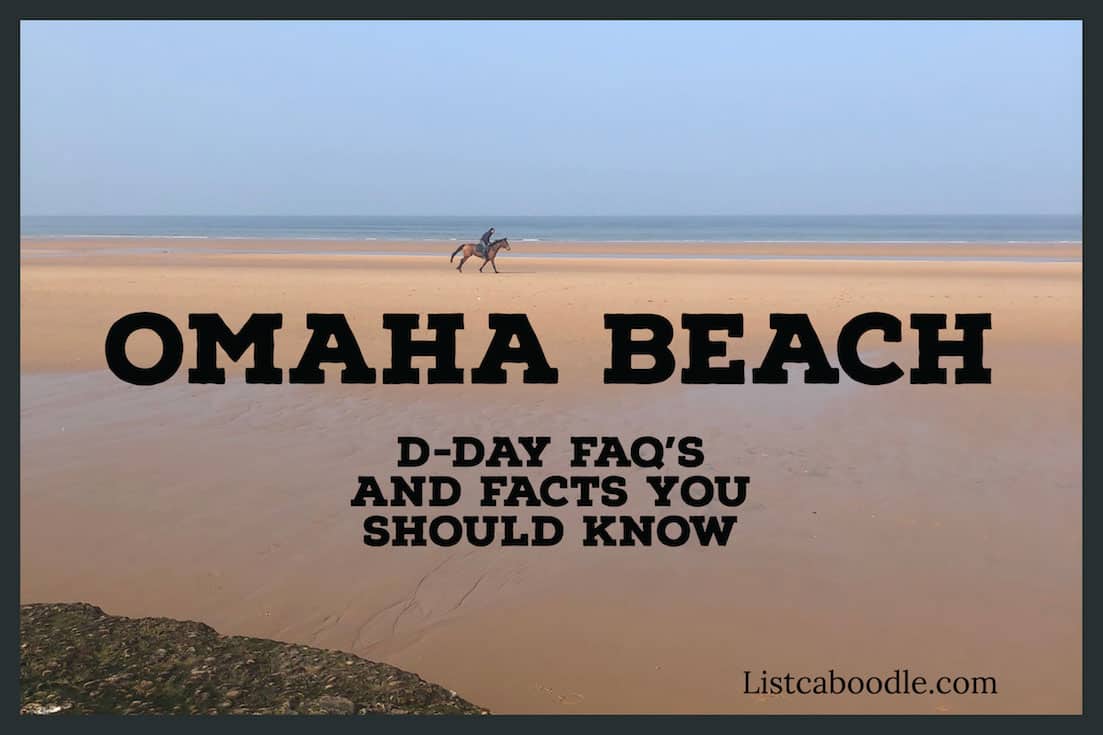
Conclusion
The process of moving that many men, machines, and supplies in one day was a struggle. Things went far from perfect for the Allies, and yet over time most of their objectives were met and the Allies established a foothold on mainland Europe. It was the beginning of the end for Hitler and Nazi Germany.
If you’d like to learn more about this historic event, I recommend D-Day The Battle For Normandy by Antony Beevor.
— Mike O’Halloran
Mike’s father served in a MASH unit that arrived at Normandy Beach on D-Day +7. Mike is an author and co-founder of Listcaboodle.
Etcetera
You’re on D-Day Facts, Invasion, Combatants, Casualties, FAQ’s page.
You might like: